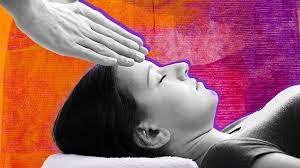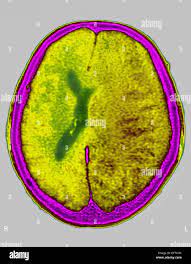In today’s digital age, we are surrounded by screens emitting a spectrum of light, including blue light. This comprehensive guide will delve into the world of blue light, exploring its origins, effects on health, sources, and ways to mitigate its potential negative impacts.
Table of Contents
- Introduction
- Understanding Blue Light
- What is Blue Light?
- The Electromagnetic Spectrum
- Sources of Blue Light
- Natural Sources
- Artificial Sources
- Effects of Blue Light on Health
- Disruption of Circadian Rhythms
- Impact on Sleep Quality
- Digital Eye Strain
- Potential Retinal Damage
- Blue Light and Digital Devices
- Smartphones and Tablets
- Computers and Laptops
- LED Lighting
- Mitigating the Effects of Blue Light
- Blue Light Blocking Glasses
- Night Mode on Devices
- Screen Filters
- Adjusting Lighting
- Scientific Studies on Blue Light
- The Link to Macular Degeneration
- Blue Light’s Influence on Melatonin
- Debunking Myths about Blue Light
- Blue Light vs. UV Light
- Blue Light and Vision Loss
- Protecting Children and Adolescents
- Vulnerability of Young Eyes
- Establishing Healthy Device Use Habits
- Blue Light and Productivity
- Impact on Daytime Alertness
- Finding the Balance
- Blue Light in Nature
- The Role in Regulating Sleep-Wake Cycles
- Ecological Implications
- Future Research and Developments
- Ongoing Studies
- Technological Innovations
- Tips for a Blue Light-Conscious Lifestyle
- Setting Device Usage Limits
- Creating a Sleep-Friendly Environment
- Conclusion
Understanding Blue Light
What is Blue Light?
Blue light is a visible light located in the high-energy end of the visible light spectrum. It has a shorter wavelength and higher energy compared to other colors of light. Blue light is naturally emitted by the sun, but it is also emitted by various artificial sources, including digital devices and LED lighting.
The Electromagnetic Spectrum
The electromagnetic spectrum encompasses all forms of electromagnetic radiation, including radio waves, microwaves, infrared radiation, visible light, ultraviolet radiation, X-rays, and gamma rays. Blue light falls within the visible light portion of this spectrum and is known for its unique effects on our biology.
Sources of Blue Light
Natural Sources
The primary natural source of blue light is the sun. Sunlight contains a mixture of colors that combine to form white light, and blue light is one of these colors. Exposure to natural blue light during the day is essential for regulating our circadian rhythms and promoting alertness.
Artificial Sources
Artificial sources of blue light have become more prevalent due to the widespread use of electronic devices. These devices, such as smartphones, tablets, computers, and LED lighting, emit significant amounts of blue light. Prolonged exposure to artificial blue light, especially during the evening, can disrupt our sleep patterns and impact our overall health.
Effects of Blue Light on Health
Disruption of Circadian Rhythms
Blue light plays a crucial role in regulating our sleep-wake cycles by suppressing the production of melatonin, a hormone that induces sleepiness. Exposure to blue light during the evening can trick our bodies into thinking it’s daytime, leading to difficulty falling asleep.
Impact on Sleep Quality
The overuse of digital devices emitting blue light, especially before bedtime, can lead to poor sleep quality. This phenomenon, known as “digital eye strain” or “computer vision syndrome,” can cause discomfort, dryness, and blurred vision.
Potential Retinal Damage
Research suggests that prolonged and intense exposure to blue light may contribute to retinal damage over time. While more studies are needed to establish a clear link, it’s essential to be cautious about excessive exposure to blue light.
Blue Light and Digital Devices
Smartphones and Tablets
Smartphones and tablets have become integral parts of our lives, but their screens emit significant amounts of blue light. Using these devices for extended periods, particularly close to bedtime, can disrupt sleep patterns.
Computers and Laptops
Similar to smartphones and tablets, computers and laptops emit blue light that can strain our eyes and affect our sleep. Many devices now offer “night mode” settings that reduce blue light emissions during the evening hours.
LED Lighting
LED lighting, while energy-efficient, can also emit higher levels of blue light than traditional incandescent bulbs. Opting for warm-colored LED lights or using blue light filters can help mitigate potential negative effects.
Mitigating the Effects of Blue Light
Blue Light Blocking Glasses
Blue light blocking glasses are designed to filter out or absorb blue light, reducing its impact on our eyes and sleep patterns. These glasses are particularly helpful for individuals who spend long hours in front of screens.
Night Mode on Devices
Many devices now offer a “night mode” or “blue light filter” option that adjusts the color temperature of the screen to emit warmer tones, reducing blue light emission during the evening.
Screen Filters
Screen filters are physical or software-based overlays that can be applied to devices to reduce blue light emissions. These filters can be especially useful for individuals who are highly sensitive to blue light.
Adjusting Lighting
Creating a blue light-conscious environment involves choosing warm-colored lighting for indoor spaces, especially in the evening. This can help signal to our bodies that it’s time to wind down and prepare for sleep.
Scientific Studies on Blue Light
The Link to Macular Degeneration
Some studies suggest that chronic exposure to blue light, especially the high-energy blue-violet light, may contribute to age-related macular degeneration (AMD). This condition affects the central part of the retina and can lead to vision loss.
Blue Light’s Influence on Melatonin
Blue light exposure, particularly during the evening, can suppress the production of melatonin, affecting our sleep-wake cycles. Minimizing blue light exposure before bedtime is essential for maintaining healthy sleep patterns.
Debunking Myths about Blue Light
Blue Light vs. UV Light
Blue light is often mistaken for ultraviolet (UV) light, which has higher energy and shorter wavelengths. Unlike UV light, blue light is visible and is not linked to skin damage.
Blue Light and Vision Loss
While some concern exists about blue light’s potential impact on eye health, evidence linking blue light directly to vision loss is limited. Proper screen use and protective measures can help mitigate potential risks.
Protecting Children and Adolescents
Vulnerability of Young Eyes
Children and adolescents have more transparent corneas and lenses, allowing more blue light to reach the retina. It’s crucial to limit their screen time and encourage outdoor activities to promote healthy eye development.
Establishing Healthy Device Use Habits
Setting guidelines for device use, such as implementing screen-free times before bedtime, can help children and adolescents establish healthy sleep routines.








